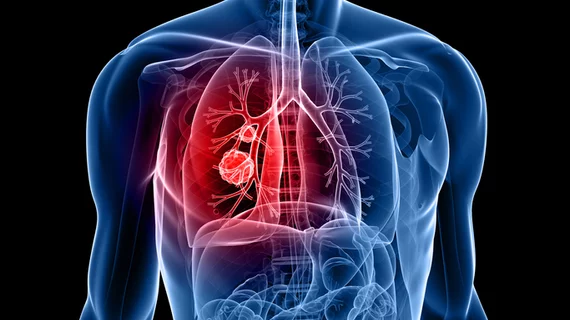Only 38% of patients receive appropriate follow-up care for incidental pulmonary nodules
Only about 38.4% of patients receive appropriate follow-up care for incidentally detected pulmonary nodules, with a few key factors worsening their chances, according to a new analysis published in JACR [1].
In particular, those in the top quartile of the CDC’s Social Vulnerability Index were more likely to experience inappropriate follow-up care compared to those in the bottom quartile. Factors such as minority status, language, housing and transportation also impacted patients’ chances of receiving proper follow-up care, experts noted.
The findings are based on a retrospective analysis of nearly 2,500 individuals with incidental pulmonary nodules, diagnosed between 2018-2019 at an urban tertiary care center and followed for two years.
“Our results underscore the association between structural inequities and health disparities,” corresponding author Stella K. Kang, MD, with the NYU Grossman School of Medicine, and colleagues wrote July 18. “Patients living in lower socioeconomic or minority communities with higher levels of disability or lower levels of transportation may face challenges in healthcare access. Other factors such as language barriers in patient-provider communication may also play a role. While additional research is needed to examine the causal role in guideline-concordant follow up for IPN nodules, overall, our results suggest that upstream factors, such as minority composition at community level and the uneven balance of resources among communities, contribute to IPN care disparities, emphasizing the need for further community-based needs assessments that could guide policy.”
The study’s authors included patients with incidentally detected nodules greater than 6 mm in size or multiple subsolid, ground-glass IPNs lower than they amount. They focused on instances where follow-up was labeled as “non-optional,” with Kang et al. defining “inappropriate follow-up” as either occurring 60 days after the recommended period or if there was no record of treatment.
The risk for inappropriate care was found to be “even greater” in nodules at higher risk for lung cancer when compared to lower-risk instances among patients in the top quartile of the Index of Concentration at the Extremes. This, the authors noted, underscores “the lack of an effective safety net for even high-risk lung lesions among patients residing within a high degree of racialized economic segregation.”
“Our results warrant investigation of stronger monitoring and supportive policies for patients living in areas of social and economic disadvantage to facilitate IPN care and potentially to reduce lung cancer disparities, both from the perspectives of system-level care delivery, and potentially, quality measures,” Kang et al. advised.
Read more in the Journal of the American College of Radiology at the link below.

